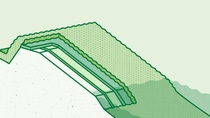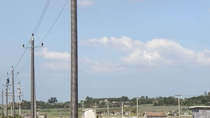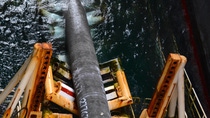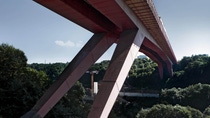Construction
The lull before the storm
Extreme natural events will increase significantly worldwide: Storms, floods, and earthquakes often cause serious damage. Predicting such disasters is only possible to a limited extent – but there are ways of mitigating the consequences. Disaster Durable Solutions™ bundle a variety of applications to protect buildings and infrastructure.
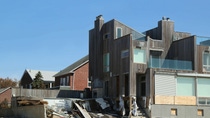
Environmental disasters are barely predictable and their impact is difficult to estimate, but the destruction they cause is often immense. Worldwide, over 98 million people were affected by natural disasters in 2015 alone. And even if the worst is averted and human life is spared by such events, the people concerned may have to battle with the effects from a long time to come: Storms and floods damage and destroy whole houses, neighborhoods, or even towns. For many people, this means temporary homelessness and a major drain on finances. In 2015, the destruction due to storms, tornados, and blizzards was responsible for economic loss of over USD 11 billion worldwide. Affected are not only buildings, but also, frequently, infrastructure: Savage winds, gusts, and rainfall bring road traffic to a standstill, devastate whole streets, and cause power outages. In 2012, about 8 million people in New York were without electricity when Hurricane Sandy extending more than 100 km made landfall in New Jersey. Globally, storms rank among the worst natural disasters and regularly cause the biggest financial damage.
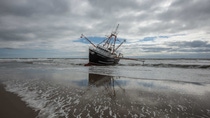
Reconstruction is time-consuming and costs millions – and the number of weather events on this scale is expected to increase in the years to come. Climate change is bringing more extreme weather. The intensity of tropical storms may well grow significantly, although rising air temperatures will raise precipitation in other climate zones as well. In its fifth assessment report, the Intergovernmental Panel on Climate Change (IPCC) has already drawn attention to the dangers: “Impacts from recent climate-related extremes, such as heat waves, droughts, floods, cyclones, and wildfires, reveal significant vulnerability and exposure of some ecosystems and many human systems to current climate variability.” So not only buildings and infrastructure are affected by natural events, but sometimes entire areas. Erosion and flooding can seriously damage even an intact environment and have huge economic impacts.
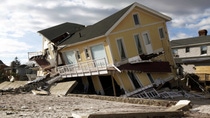
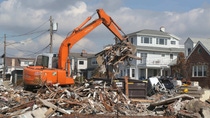
2: After the cleanup it is time to think about reinforcements.
The Munich Re Group reports that the 50 worst storms in 2015 damaged or destroyed 4 million buildings. When homes collapse like card houses or whole walls are tossed around by the wind, this is mainly due to construction methods. In the USA, timber-frame construction is common. While this form of building is also well-known in Europe, much lighter materials are put to use in construction in the USA and also in Asia. In the USA, storm vulnerability is exacerbated further by prefabricated elements and roofs with very basic decking. Even if natural disasters cannot be prevented, the impact can at least be mitigated. Sound construction methods from the outset limit the damage potential and create the conditions for effective storm protection. Together with numerous disaster management bodies, BASF has founded an initiative and pooled a variety of applications for protection from natural disasters: Disaster Durable Solutions™.
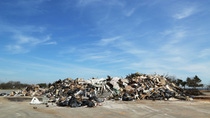
It is often said that communities devastated by sudden natural disasters come together after the storm but, wouldn’t we be safer if we came together before disaster strikes to mitigate potential damages? This is the rationale behind Disaster Durable Solutions™, a BASF market strategy “Building Resilience” in the North American construction community.
“Although we can’t always predict the weather, with Disaster Durable Solutions™ and new technologies in the building and construction industry, we can build (and retrofit) stronger and more storm-resistant homes, buildings, structures, and coastal shorelines with disaster mitigation in mind,” according to Joel May, Disaster Durable Solutions™ Manager. “Our program focuses on disaster solutions with the benefits of energy and labor efficiency that ultimately prevent economic interruptions.” May cites examples of Disaster Durable Solutions™ that include closed-cell spray polyurethane foam roofing and insulation systems for increased racking strength and wind uplift resistance; shock-absorbing Sandwich Plate Systems (SPS); Elastocoast® water management; resilient foam core doors and flood-resistant coatings for below grade construction. The need is clear. According to global reinsurer Swiss Re, weather disasters in the United States from North Atlantic hurricanes alone contributed to global economic losses of US $110 billion in 2014 and US $138 billion in 2013.
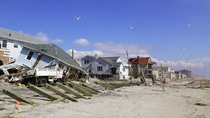

Disaster Durable Solutions™ by BASF engages a broad range of disaster mitigation stakeholders including federal and state agencies, non-profits, trade associations, architects, builders, engineers, city planners and code officials.“We are working on the front lines to ensure durable, resilient construction reduces the significant impacts natural disasters have on communities across North America,” Erika Peterman, Vice President Performance Materials Construction North America, added. “Our solutions provide stronger and in many cases, more comfortable structures to the construction market.” For example, the Disaster Durable Solutions™ team is working with communities to educate them on the benefits and cost-effectivenessof closed-cell spray polyurethane foam (ccSPF) attic-rafters/truss insulation for both new and existing homes to prevent hurricane related roof failures. The reason is simple: applying ccSPF can improve racking strength by as much as 300% while adding air and moisture barriers.
We are working on the front lines to ensure durable, resilient construction reduces the significant impacts natural disasters have on communities across North America.
The damage Hurricane Katrina inflicted on the South Eastern U.S. in August 2005 is legendary. The loss of human life and suffering remains incalculable. Property loss, however, was calculated. Estimates totaled more than US$108 billion, making Hurricane Katrina the costliest Atlantic storm on record. In direct contrast, the Mississippi Coast Coliseum, a 24,780-square-foot, domed stadium survived with little damage.
“Not one building along the beach had a viable roof left on it except the coliseum,” says Bob Rothlingsberger of Coatings Application and Waterproofing Co. Rothlingsberger’s field observations were confirmed in a 2006 National Institute of Standards and Technology report which concluded, “A number of spray polyurethane foam roofing systems were observed. Some of these roofs were estimated to be about 20 years old. With one minor exception, all were found to have sustained Hurricane Katrina extremely well without blow-off of the SPF or damage to flashings.”


